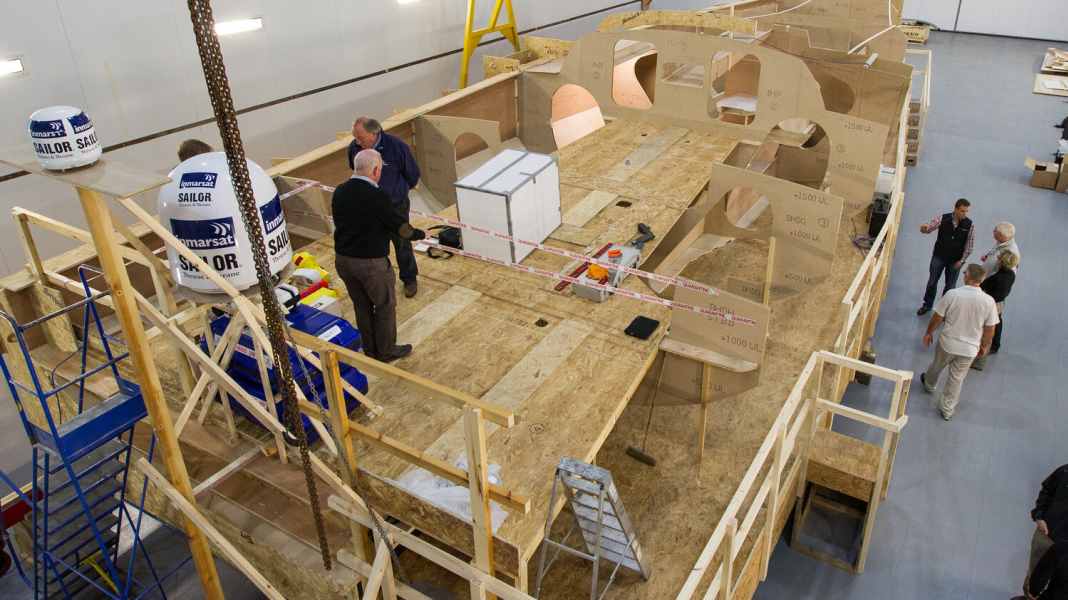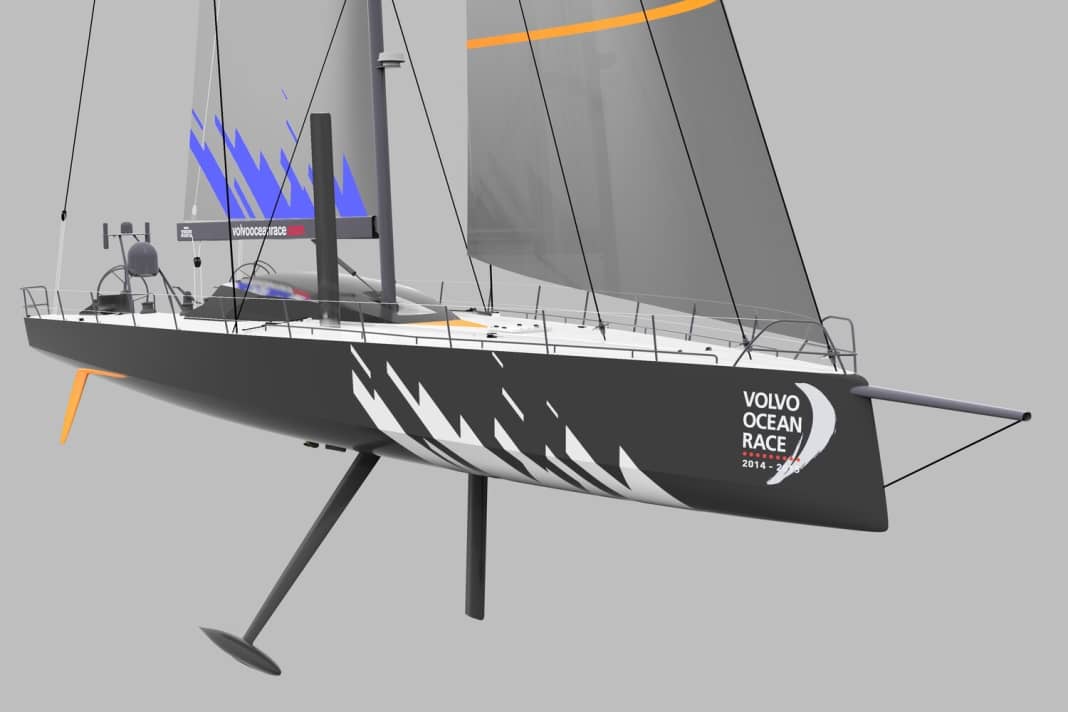
The development of the new Volvo Ocean 65 Grand Prix One design for the 2014/2015 race means new challenges for the organisers of the Volvo Ocean Race. At 4.5 million euros, the boats will be around 30 per cent cheaper than their predecessors, the Volvo Open 70, and will also be more robust, with each boat designed to withstand two circumnavigations. These goals are to be achieved by introducing a standardised class.






As hardly any changes can be made to the finished boat in a standardised class, the boat builders try to eliminate any errors before construction begins by means of elaborate production. "In the past, some teams have built models of certain areas of their boat where ergonomics were critical. But for this project, we built a model of the boat in its entirety," explains Project Manager James Dadd from Green Marine in Southampton. This is where the racing yachts are ultimately assembled. "The model allows a close look at the basic layout on and below deck. We immediately recognised some details in the navigation corner and the galley that required further development."
"The overall cable routing is another example of how important it is to see the boat in its full size. How the cables are to be routed and how the installation will work is best worked out at full size, especially when the cable harnesses are later supplied as a unit for each boat. The design of the important mounting brackets for the communications equipment is another key area that has benefited from dry testing." Ideally, the boat builders should no longer need a tape measure to assemble one of these boats.
The move to a standardised class also allows for greater safety reserves in the boats. "We knew from experience that the Volvo Open 70 would have benefited from just 40 kilograms of extra structure in the last race," says Neil Cox, former boatswain for ABN Amro and shore manager on Puma and Camper in the previous two races. "This time we can make such changes without any problems as they will work on any boat. Everyone benefits from a robust boat that can be driven harder."
Building the prototype part 3
The sails are another area where the standardised design should bring advantages in terms of complexity and cost. "Each team will have the same nine sails, including a storm jib and a trysail," explains race organiser Jack Lloyd. The sails will be delivered together with the boat. For the race, the teams will then receive seven more sails for the start in Alicante. None of these sails can be modified or repaired by the teams, with the exception of measures authorised by the measurer if a sail has been damaged.
Production of the prototype began at the same time as the modelling. The Italian shipyard Persico laminated the outer skin of the first, almost 20 metre long hull, while the first carbon layer for the first deck was completed at Multiplast in France. The first boat on the production line is expected to be completed by the end of June 2013. After that, a new boat will leave the gates of Green Marine every seven weeks. The plan is to have each boat ready to sail within three to four days.
